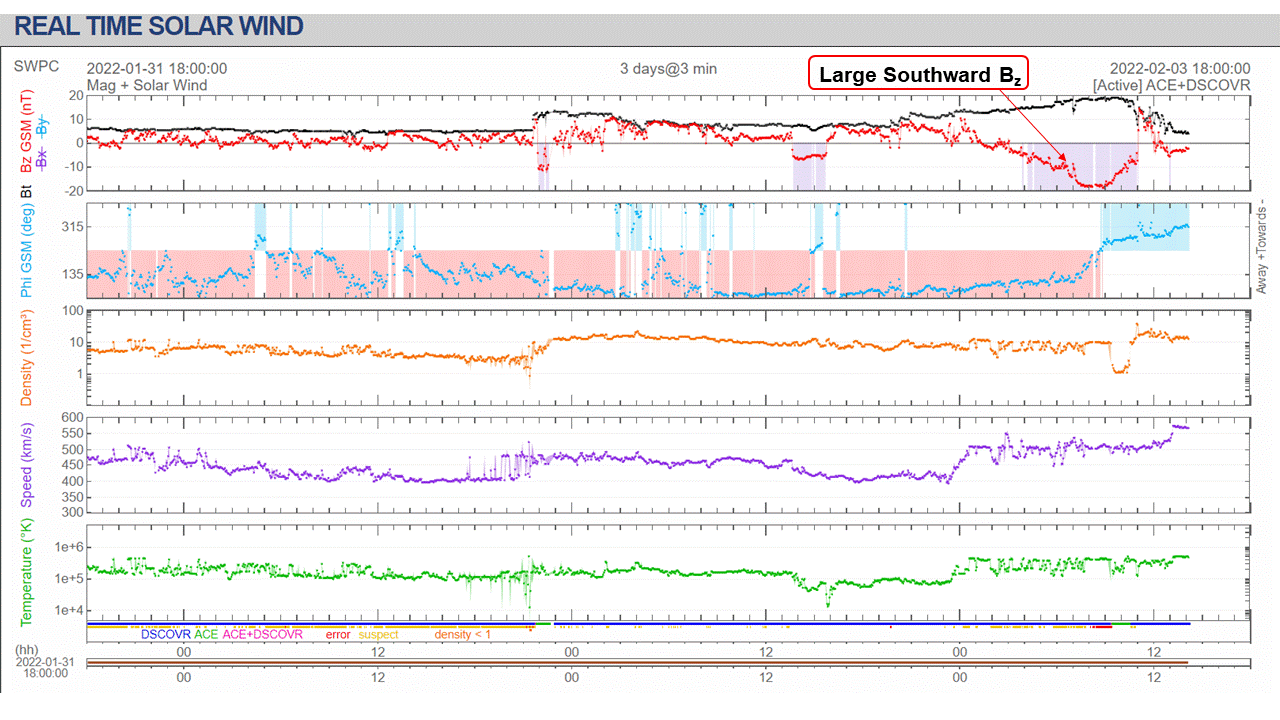Space Weather Alert Update - 3rd February 2022
What Has Happened?
The coronal mass ejection from the 29th of January, associated with an M1.1-class solar flare, appears to have arrived at around 21:30 UTC on the 1st of February, causing a shock signature in the solar wind.
Following the shock, the vertical magnetic field of the solar wind stayed predominantly northward for around 24 hours so the geomagnetic activity was not significantly enhanced as a result.
Shortly after 23:00 UTC on 2nd of February, the magnetic field of the solar wind switched southward and sustained for nine hours. Globally, this led to periods of STORM level geomagnetic activity this morning.
Currently, the solar wind remains elevated and energised so there could continue to be some chance of auroral displays later this evening assuming clear, dark skies.
Sign-up to receive Geomagnetic Disturbance Alert emails.
Follow us on Twitter:
Follow @BGSauroraAlert for more occasional aurora alerts.
Follow @BGSspaceWeather for daily space weather forecasts.
Glossary
- BGS
- The British Geological Survey is one of the Natural Environment Research Council's Research Centres.
- CME or Coronal Mass Ejection
- The eruption of a portion of the outer atmosphere of the Sun into space, caused by rapid changes in its magnetic field. Often occurs along with a solar flare.
- Solar Flare
- Energy released by the explosive reorganisation of magnetic fields within the Sun's atmosphere.
- Solar Wind
- The ever-present expansion of the Sun’s hot outer atmosphere into the solar system, which carries space weather within it.


